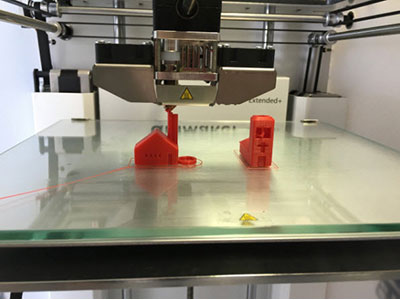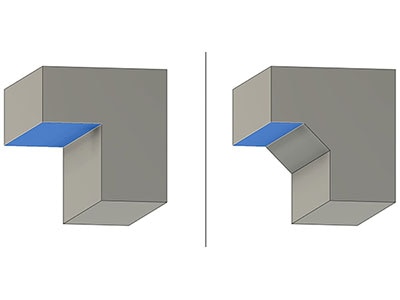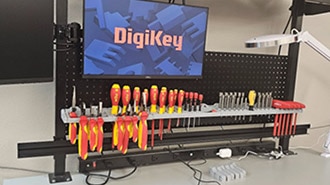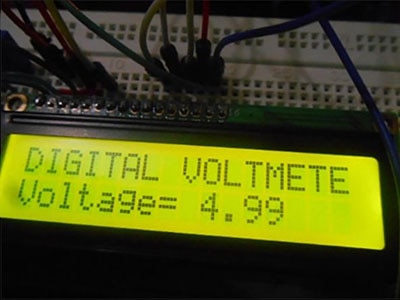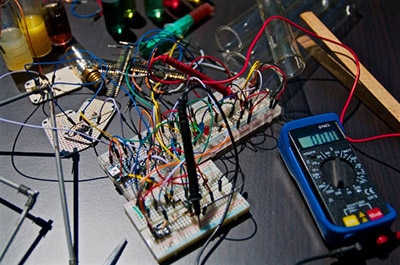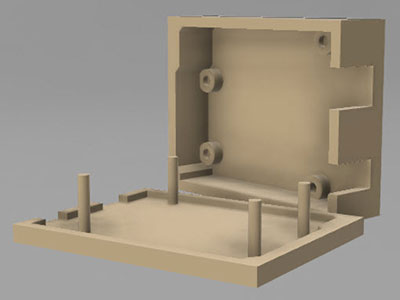How to Use a Caliper
2024-12-23 | By Jake Hertz
A caliper is a fundamental tool used to measure an object’s dimensions with high precision. It is widely used in fields such as engineering, manufacturing, and woodworking to measure the thickness, diameter, or internal dimensions of an object. In this article, we will cover the parts of a caliper, how to use it for different measurements, and tips for achieving accurate results.
Understanding the Parts of a Caliper
Before diving into its usage, it’s essential to understand the main components of a caliper.
Depending on the type of caliper, you may encounter different measurement systems. Vernier calipers, which rely on a sliding scale, require manual reading, while dial calipers use a mechanical dial to display measurements. Digital calipers are often the easiest to use, as they show measurements directly on a digital screen.
Some standard caliper parts include
- Outside Jaws: Used for measuring the external dimensions of an object (e.g., thickness or diameter).
- Inside Jaws: Used for measuring internal dimensions (e.g., the diameter of a hole).
- Depth Rod: A thin rod that extends from the end of the caliper, used to measure the depth of an object.
- Thumbwheel/Slider: Allows for precise movement of the jaws.
- Locking Screw: Locks the jaws in place for holding a measurement.
- Digital/Analog Scale: Depending on the type of caliper (digital or vernier), this part will display the measured value.
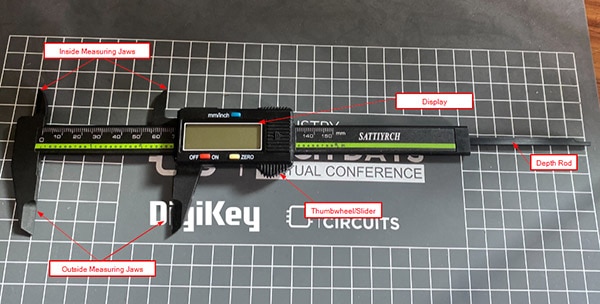 The parts of a digital caliper.
The parts of a digital caliper.
Step-by-Step Guide to Using a Caliper
To achieve accurate measurements, follow these steps closely:
Calibrate the Caliper
Before using a caliper, you must calibrate it. Close the jaws completely and check if the scale reads zero. If it does not, recalibrate it according to the caliper’s manual instructions. Use the "zero" button to reset a digital caliper.
Measure External Dimensions
- Open the outside jaws by sliding the thumbwheel or manually moving the slider.
- Place the object between the jaws.
- Gently close the jaws around the object, ensuring that they make full contact but do not force them, as this can lead to inaccurate measurements.
- Read the measurement from the display or the vernier scale. If using a digital caliper, the measurement will be displayed directly on the screen. For vernier calipers, read the main scale first, followed by the vernier scale for additional precision.
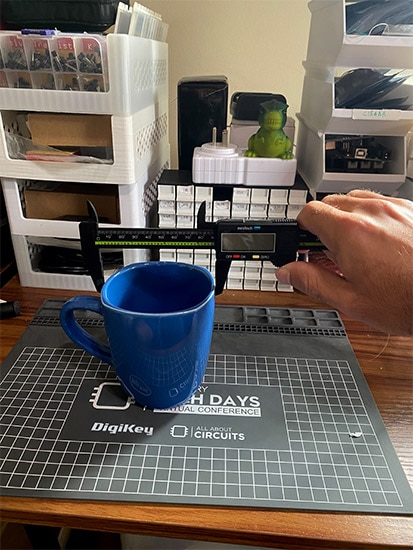 Measuring the external dimensions of a coffee cup.
Measuring the external dimensions of a coffee cup.
Measure Internal Dimensions
- Open the inside jaws.
- Insert the jaws into the internal space you wish to measure, such as a hole or cavity.
- Expand the jaws until they touch the inside walls.
- Again, ensure the jaws make proper contact with the surfaces but avoid applying too much pressure.
- Read the measurement from the display or the scale.
 Measuring the internal dimensions of a coffee cup.
Measuring the internal dimensions of a coffee cup.
Measure Depth
- Extend the depth rod by sliding the caliper’s slider.
- Place the end of the caliper flat against the edge of the hole or object’s surface.
- Continue extending the depth rod until it reaches the bottom of the hole or depth being measured.
- Read the measurement from the display or the scale.
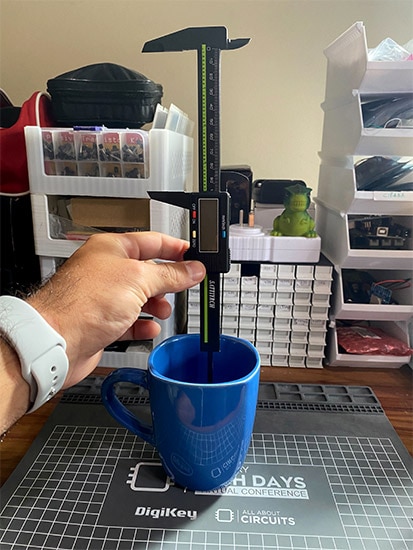 Measuring the depth of a coffee cup.
Measuring the depth of a coffee cup.
Measure Step Dimensions
Some calipers can measure the step distance between two points on an object.
- Use the rear end of the outside jaws for this purpose.
- Place the caliper on the upper step of the object, then slide the jaws down to the lower step.
- Read the step measurement from the caliper.
Tips for Accurate Measurements
To achieve reliable measurements, always ensure the caliper and the measured object are clean and debris-free. Dust, dirt, or other particles can affect the accuracy of your readings.
When closing the jaws on an object, do so with care to avoid applying too much pressure, as this can distort the object or affect the measurement. After taking a measurement, secure the caliper’s jaws with the locking screw to preserve the accuracy of the reading. For precise results, it's also good practice to measure at multiple points along the object, especially when measuring circular or irregular surfaces, to ensure consistency across different sections.
Regularly check the calibration of your caliper, especially after handling it or moving between different tasks. Even slight bumps or environmental changes can cause a shift in the zero setting, leading to inaccurate readings. Keeping your caliper properly calibrated ensures consistent precision.
Conclusion
Mastering the use of a caliper requires practice, precision, and attention to detail. By understanding its components, properly calibrating the tool, and following the right measurement techniques, you can take highly accurate measurements for a variety of applications. Whether you're measuring the external, internal, or depth dimensions of an object, always handle the caliper carefully, read the measurements accurately, and maintain the tool’s calibration for optimal results.










